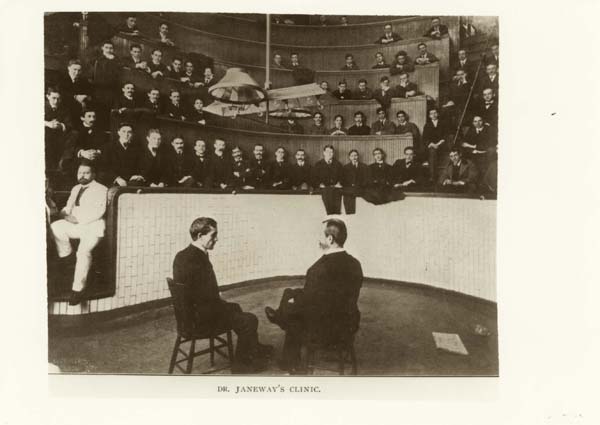
Commentary by Ilana Bragin, MD, PGY-3
Please also see the clinical vignette presented before last week’s grand rounds.
Last week’s Medical Grand Rounds was given by guest speaker Dr. Sue Quaggin, Associate Professor of Medicine at the University of Toronto, who shared with the audience her knowledge and passion of the role of Vascular Endothelial Growth Factor (VEGF) in kidney function. VEGF is a critical family of signaling proteins that is involved in vasculogenesis and angiogenesis. While the discovery of VEGF could be applied to many aspects of medicine, it has become especially relevant to the realm of cancer therapy. Tumors are often highly vascular entities and require VEGF to create their own vasculature. If a rapidly growing tumor cannot create its own blood supply, the tumor will be unable to propagate. Agents that target VEGF have proliferated, revolutionizing cancer care in general, and particularly impacting the treatment of solid tumors with treatments like bevacizumab (Avastin), ranibizumab (Lucentis), sunitinib (Sutent), and sorafenib (Nexavar), with several more in clinical trials.
However, like all medications, researchers and clinicians are learning that anti-VEGF agents can have some adverse effects on non-tumor tissue as well. This is where Sue Quaggin’s research plays a tremendous role. Dr. Quaggin’s lab focuses on the effect of VEGF on the kidney. She noted that some of the most common adverse affects of bevacizumab, an anti-VEGF agent, include hypertension (3-36% of patients) and proteinuria (in 21-64% of patients). More serious side effects include several cases of kidney failure due to thrombotic microangiopathy. Dr. Quaggin set about to define the role of VEGF in the development and maintenance of the glomerulus, thus possibly explaining the disease processes that occur when VEGF is inhibited.
Using mouse models, Dr. Quaggin explored how VEGF works on the podocytes of the glomerulus. Podocytes require VEGF production in order to create the glomerular endothelium, as done in embryonic development, but they also require VEGF throughout life in order to maintain the health of the adjacent glomerular endothelium.
When VEGF production is disrupted, by medications such as bevacizumab, there is a characteristic pattern of renal damage—mesangiolysis, endothelial swelling, and effacement of the foot processes—all characteristic of thrombotic microangiopathy. She suggests that the reason VEGF inhibition in the glomerulus is particularly significant compared to the minimal known effect on other vasculature in the body, lies in the delicate nature of the glomerulus. She proposes that this is because glomerular endothelial cells contain fenestrations that are responsible for the unique permeability of the glomerulus, and VEGF is vital to the formation of these fenestrations. A loss of healthy glomerular endothelial cells, along with their fenestrations, leads to microvascular injury and thrombotic microangiopathy.
Although it has been argued that the kidney disease associated with VEGF inhibition may be secondary to the HTN also seen due to these medications, Dr. Quaggin postulates that the HTN is seen after glomerular changes, and may also somehow be linked to the lack of VEGF.
This research has particular clinical relevance, given the impressive therapeutic use of these medications in oncology and the expectation that their use will increase. Perhaps, for example, further studies will lead to a difference in the type of monitoring of kidney function in patients who are on anti-VEGF medications.
With more patients surviving their cancer, understanding the side affects of the medication regimens involved in treatment is becoming more and more important.
